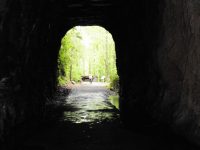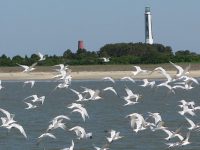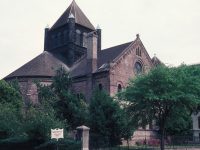S.C. Encyclopedia | Located on the Cooper River, Mepkin Abbey has a diverse history. In its early life the property served as the seven-thousand-acre rice plantation and family home of the eighteenth-century statesman Henry Laurens. Surviving traces of the plantation include a family cemetery and a large oak avenue. In 1936 the noted publisher Henry Luce, who established both Time and Life magazines, purchased the property.
While living at Mepkin, Luce and his wife, Claire Booth, hired the architect Edward Durell Stone to construct several buildings on the site, including a forester’s lodge, a laundry building, a pump house, and a farm manager’s house, made mostly of brick. Stone received his training at Harvard University and the Massachusetts Institute of Technology and spent his early career designing houses in the international style. The buildings at Mepkin reflect his modernist sensibility. The Luces also hired the landscape architect Loutrel Briggs, designer of many important gardens in South Carolina, to create a formal composition of camellias and azaleas overlooking the Cooper River.












 We Can Do Better, South Carolina!
We Can Do Better, South Carolina!

























Recent Comments